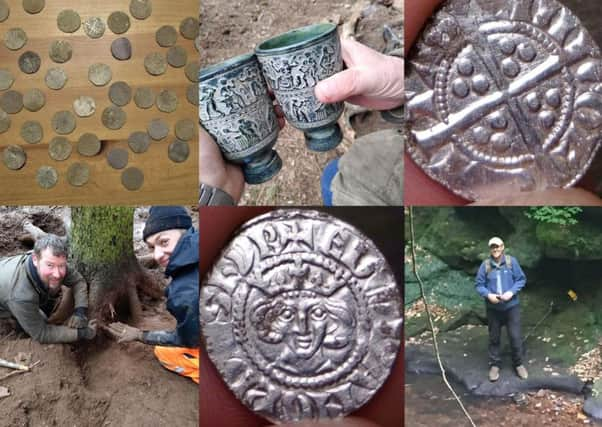Metal detector coins linked to bloody Battle of Roslin


More than 200 coins have been recovered from a former military camp near the site of the Battle of Roslin, where Scottish forces led by John Comyn decimated their English counterparts in 1303.
Experts have hailed the find, uncovered by amateur historian Jarosław Musialkowski in March, as “potentially hugely exciting”.
Advertisement
Hide AdAdvertisement
Hide AdThe conflict saw Comyn’s 8,000 men slaughter more than 20,000 members of the English forces under the command of John Segrave in one of the first major battles since the Scots’ defeat at Falkirk five years earlier.
Among the collection of silver discovered by Jarosław (45), and brother Marcin are dozens of coins bearing a likeness of Edward I, as well as several rare pieces thought to be Irish mint.
The hoard is now set to be evaluated by experts at the National Museum of Scotland’s treasure trove unit.
Jarosław, originally from Puck in Poland, said: “We had found some silver at the site before, but nothing of this level.
Advertisement
Hide AdAdvertisement
Hide Ad“We had some archaeological experts come down and excavate the site. They picked up some items but not many.
“It was only after we went back and found 44 more coins that we realised we were really on to something.”
Pieces of pottery were also uncovered as part of Jarosław’s dig. The exact location is currently being kept “confidential” by experts.
Historical records are unconfirmed, although it is thought that fewer than 2,000 English of the near 30,000-strong army survived the battle.
Advertisement
Hide AdAdvertisement
Hide AdJarosław added that several theories had been put forward as to why such a large collection of coins was discovered in one area, although he said he has discounted the idea it came from an “after-battle looting” of fallen soldiers due to the absence of jewellery and weapons.
He said: “There is a theory from local people that it could be working women’s silver.
“There were thousands of men in the camp so it is possible.
“But I think it is more likely to have been payment for mercenaries who took part in the battle.
“Those hiring them would not have wanted to pay out before they were killed – it is much cheaper to just pay who is left.
Advertisement
Hide AdAdvertisement
Hide Ad“So I think it is possible it was buried with the intention of digging it up later, but we have to wait and see what the museum says.”
A spokesman for the Scottish Treasure Trove unit confirmed they are now assessing the find in Roslin, but were unable to comment on its current contents until each item has been appraised.